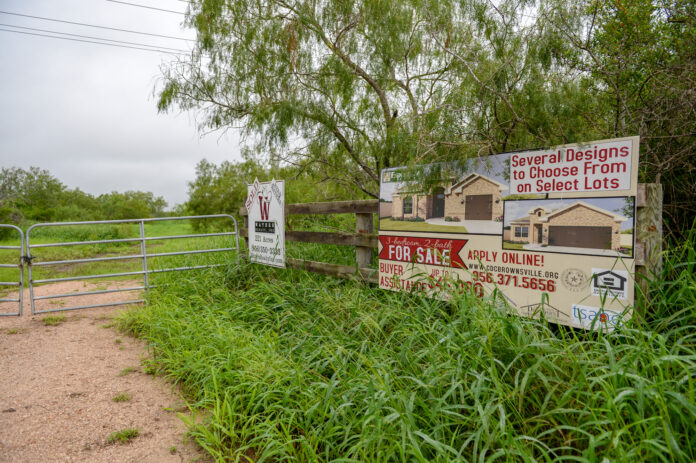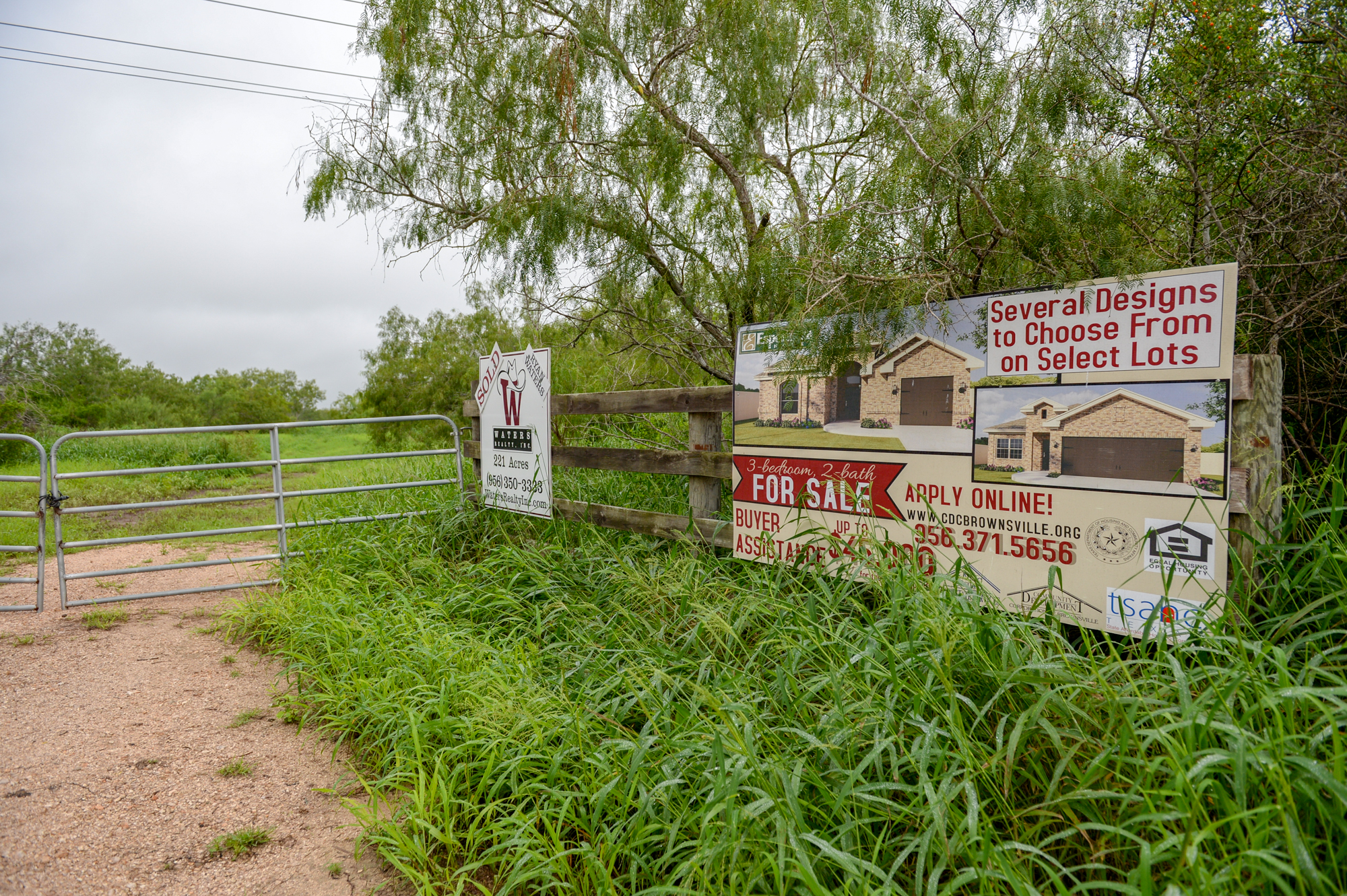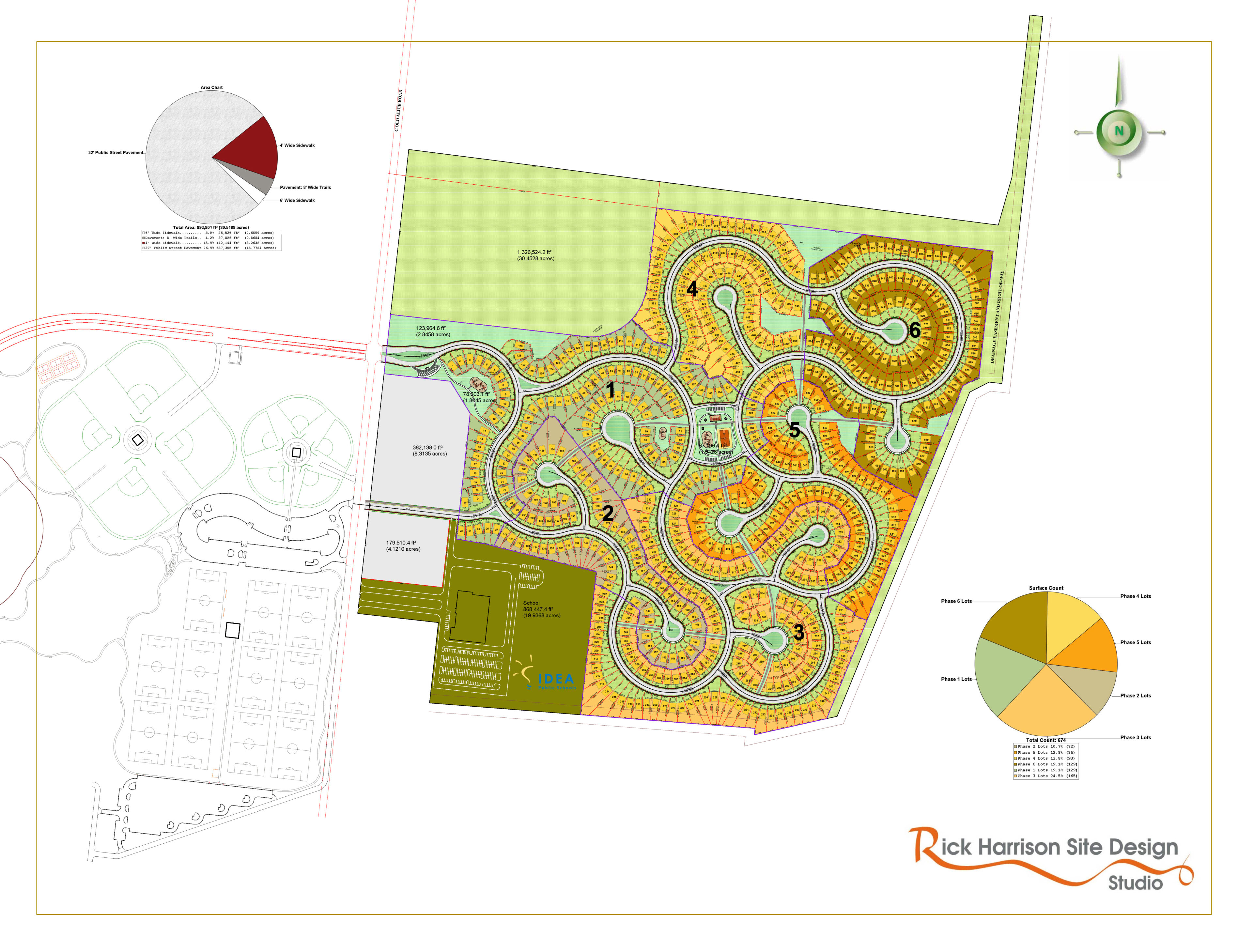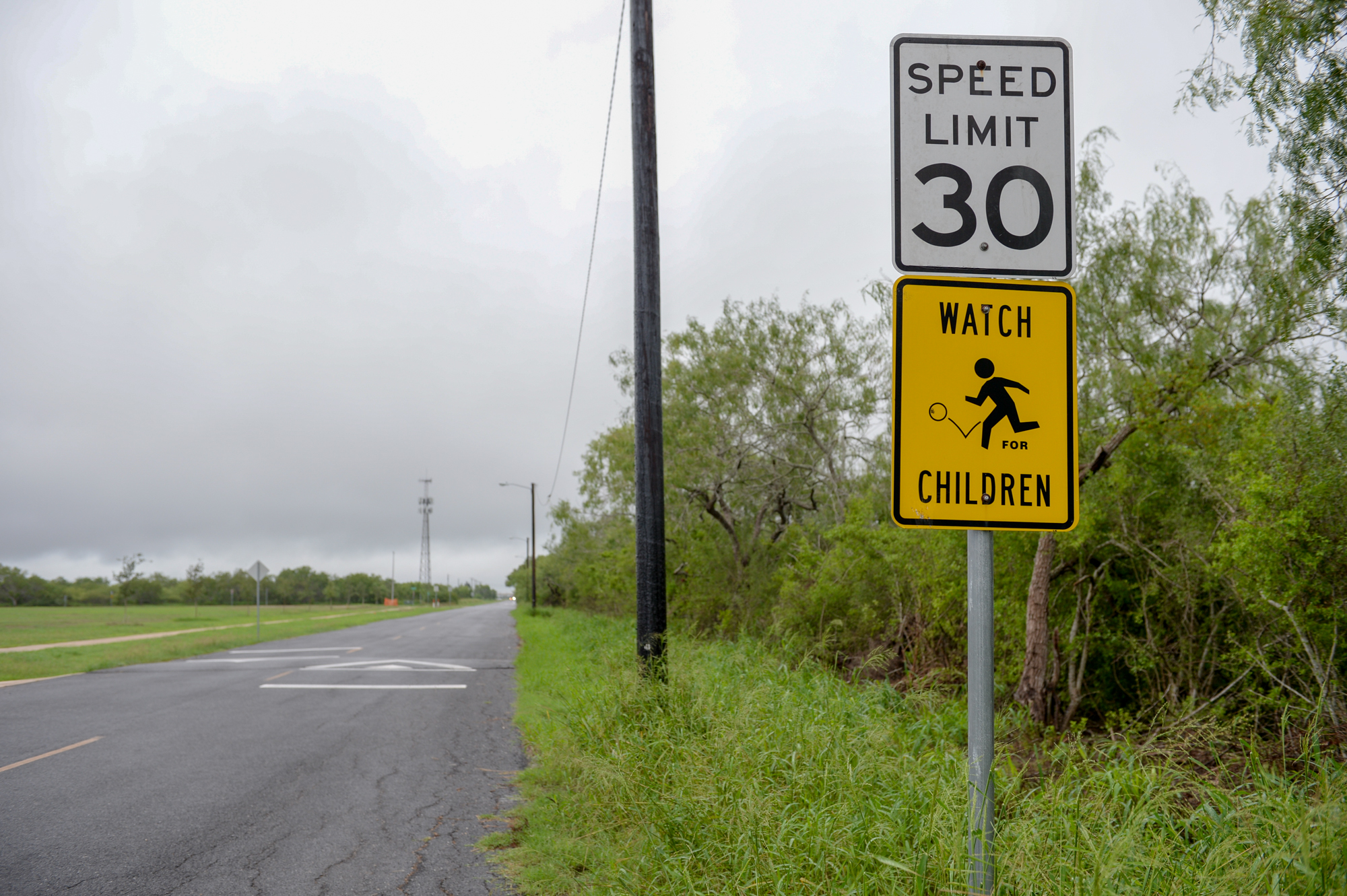The Community Development Corporation of Brownsville’s intention to break ground on a new mixed-income residential subdivision next to the Brownsville Sports Park has run up against the Greater Brownsville Incentive Corporation’s wish that the land be part of a proposed industrial park.
About 18 months ago, CDCB bought 200 acres east of the sports park for Palo Alto Groves subdivision, which would feature 675 single-family homes in the $100,000 to $200,000 price range, 300 or 400 multi-family “casitas” for rent, two parks and five miles of hike-and-bike trails.
The city has already approved the plat for the first phase — 129 single-family units and 150 multi-family units — and an infrastructure contractor is ready to start work, according to CDCB Executive Director Nick Mitchell Bennett.
“It’s ready to go,” he said. “The idea was literally to start three weeks ago.”
The subdivision would be served by IDEA Public Schools, which has purchased land for a new campus abutting the subdivision, completed the engineering and design phases and is in the process of assigning teachers and principals to the new school, Mitchell-Bennett said. IDEA has also already allocated money for construction, he said.
The Valley Baptist Legacy Foundation and Brownsville Community Improvement Corp. are helping fund the Palo Alto Grove’s park infrastructure and trail system, Mitchell-Bennett said.
The tract is currently zoned Dwelling “Z.” CDCB requested that the city commission approve an ordinance to rezone a portion of the tract to Apartment “G” to allow for the multi-family housing component. The ordinance had its first reading at the commission’s Aug. 7 regular meeting, and commissioners voted unanimously to adopt it.
At the second and final reading at the commission’s Aug. 21 regular meeting, the ordinance was tabled, apparently after input from GBIC. At an Aug. 28 regular meeting, the item was tabled again after Mitchell-Bennett and GBIC’s new executive director, Mario Lozoya, presented their arguments for and against the rezoning request and, by extension, the subdivision project.
In 2011, GBIC released the Brownsville Industrial Area Plan, which called for development of an industrial park that would include the 200 acres CDCB purchased a year and a half ago. GBIC owns 350 acres out of the 1,100 necessary for an industrial park, according to Lozoya. The industrial plan includes a provision for some amount of multi-family housing, as well as advising flexibility.
And while the subdivision project is “the definition of shovel ready,” Mitchell-Bennett said, no progress has been made on the industrial park aside from GBIC’s purchase of acreage. Asked if GBIC indeed opposes the subdivision and, if so, why, Lozoya responded via email only that the site is “adjacent to a rail yard and GBIC land designated for industrial development” and near the Cameron County Detention Center.
Mitchell-Bennett said CDCB bought the 200 acres and proceeded with the residential project because nothing seemed to be happening with the industrial park, noting that other subdivisions have been built nearby, not to mention the sports park. CDCB in the last several months informed GBIC through official channels of its plans for the subdivision and requested information on the status of the industrial park but got no response, he said.
“No issues were brought up,” Mitchell-Bennett said. “We were very, very transparent on this. We met with four of the commissioners. We tried to meet with all seven — but people’s schedules and stuff don’t always work — just to make sure that everybody was on board.”
Building the subdivision near the industrial park is reasonable since people generally like to live near where they work, he said. Mitchell-Bennett said Brownsville is used to treating major issues like housing, health, education and economic development as if they were unrelated, though the opposite is true. And while Palo Alto Groves would help solve the city’s massive low- to medium-income housing shortage, the subdivision combined with an industrial park and a public school would address multiple issues at once, he said.
“We want to be able to put that into play, and I think working together with GBIC is a phenomenal thing,” Mitchell-Bennett said. “We could be the standard around the state of affordable housing and economic and community development, working together to improve a community.”
City commissioners have directed GBIC and CDCB to find a compromise that works for all parties, he said. Lozoya, via email, said the solution from GBIC’s perspective would entail a subdivision of “relevant size, safety in mind, and with correct traffic/logistics infrastructure.”
He also said the subdivision’s emphasis should be on multi-family housing, while proposing “reduced housing density” — fewer units, in other words. Mitchell-Bennett said for the subdivision to stop with phase one and limit itself to 129 or 130 units is not feasible to support an IDEA campus.
“In order for us to build a school we’re going to need more rooftops in there,” he said. “I would be the first to admit, (GBIC) didn’t ask for 1,000 new houses. But nothing’s been done out there. We bought this land. We ran the plan by everybody — those who would talk to us.
“Everyone was invited to participate and this is what we came up with, and I think it fits beautifully. … I’ve got no beef with GBIC. I think their plan is good. I think we have a place in the plan.”
Lozoya said via email that both projects have merit.
“We are working with the (city of Brownsville) and CDCB to see how to best serve the people of Brownsville,” he wrote. “I believe that we can find a solution that benefits our area by creating a strong industrial corridor that will provide higher paying careers for our citizens, while still supporting affordable residential development in desirable and safe areas.”








